Accepted Scientific Name: Crassula deceptor Schönland & Baker f.
J. Bot. 40: 285. 1902

Crassula deceptrix (Crassula deceptor) Photo by: Giuseppe Distefano
Origin and Habitat: It is a native of South Africa (Bushmanland as far cast as Kakamas, south-wards through Namaqualand to Vanrhynsdorp) and south-western Namibia.
Habitat: Succulent Karoo desert, quartz gravely flats and gravelly or rocky slopes.
Ecology: This small plants which absorbs moisture through the epidermis.
Synonyms:
See all synonyms of Crassula deceptor
back
Accepted name in llifle Database:Crassula deceptor Schönland & Baker f.J. Bot. 40: 285. 1902Synonymy: 7
back
Common Names include:
ENGLISH: Alabaster Towers
CHINESE (中文): 夢殿
LITHUANIAN (Lietuvių): Kampuotasis storlapis
Description: Crassula deceptorSN|12127]]SN|12127]] is a very variable small perennial succulent herb with attractive, greyish- white leaves forming characteristic 4-ranked columns, it stays relatively low and clumps readily.
Note: Crassula cornutaSN|12131]]SN|12131]] (with almost white leaves longer and more angular) is often included with Crassula deceptorSN|12127]]SN|12127]] (with usual rounded leaves) there is a gradual series of transitional forms between these two extreme forms.
Stem: The internodes are short with the subsequent leaves showing extremely dense packing resulting in compact columns to a height of about 70(-150) mm and 25 mm in diameter
Leaves: Fleshy, 1,5-2 cm long, broadly ovate to triangular-ovate, united, about 14 mm round +/- pointed in the shape of canoes, tightly imbricated in overlapping pairs along a usually unbranched stem, which stack off a central stem and produce a square pillar. Grey-green covered with a light, white powdery (pruinose) surface and hard spherical papillae and the scattered hydathodes are often conspicuous, especially in adverse conditions. These characters preserve moisture and protect from strong sunlight. The species shows a complete range of leaf form from adpressed, to spreading, to erect leaf apices.
Inflorescences: Few-branched loose cyme, peduncle is 20-80 mm long and covered with round papillae.
Flowers: Very small, sweet-scented. Corolla tubular, cream to pinkish, fading to brown.
Blooming season: Flowers appears in every time of the yeas when conditions are appropriate, but they tend to be produced mainly during winter as these are basically a southern hemisphere plants.
Subspecies, varieties, forms and cultivars of plants belonging to the Crassula deceptor group
 Crassula cornuta Schönland & Baker f.: has almost white leaves which are longer and more angular, while Crassula deceptor usually has rounded greyer leaves.
Crassula cornuta Schönland & Baker f.: has almost white leaves which are longer and more angular, while Crassula deceptor usually has rounded greyer leaves. Crassula deceptor Schönland & Baker f.: has greyish-white leaves forming characteristic 4-ranked columns with adpressed to spreading leaf apices. Distribution: Bushmanland to Namaqualand and SW Namibia.
Crassula deceptor Schönland & Baker f.: has greyish-white leaves forming characteristic 4-ranked columns with adpressed to spreading leaf apices. Distribution: Bushmanland to Namaqualand and SW Namibia.
Notes: Crassula deceptorSN|12128]]SN|12127]] was incidentally called Crassula deceptrixSN|12127]]SN|12128]] (an invalid feminine form therefore reduced to synonymy and corrected in Jacobsen's (1974) Lexicon)
Bibliography: Major references and further lectures
1) Edgar Lamb, Brian Lamb “The Illustrated Reference on Cacti & Other Succulents” Volume 5 Blandford Press, 1978
2) Werner Rauh “The Wonderful World of Succulents: Cultivation and Description of Selected Succulent Plants Other Than Cacti” Smithsonian Institution Press, 1984
3) Doreen Court “Succulent Flora of Southern Africa” CRC Press, 01/Jun/2000
4) Stuart Max Walters “The European Garden Flora: Dicotyledons” (Part I) Cambridge University Press, 1989
5) Gordon D. Rowley “The illustrated encyclopedia of succulents” Crown Publishers, 01/Aug/1978
6) Eggli, Urs “Illustrated Handbook of Succulent Plants, Crassulaceae Illustrated Handbook of Succulent Plants.” Springer, Berlin 2002
7) Hermann Jacobsen “Abromeitiella to Euphorbia” Blandford Press, 1960
8) Hermann Jacobsen “A handbook of succulent plants: descriptions, synonyms, and cultural details for succulents other than Cactaceae” Volume 1 Blandford Press, 1960
9) Toelken, H.R. 1997. “A revision of the genus Crassula” in southern Africa. Annals of the Bolus Herbarium 8,1-595.
10) Van Jaarsveld, E., Van Wyk, B-E. & Smith, G. “Succulents of South Africa.” Tafelberg, Cape Town. 2000
11) John Manning “Field Guide to Fynbos” Struik, 2007
12) Vera Higgins “Succulent Plants Illustrated” Blandford Press, 1949
13) Goldblatt, P. and Manning, J.C. “Cape Plants: A conspectus of the Cape Flora of South Africa.” Strelitzia 9. National Botanical Institute, Cape Town. 2000.
14) Raimondo, D., von Staden, L., Foden, W., Victor, J.E., Helme, N.A., Turner, R.C., Kamundi, D.A. and Manyama, P.A. “Red List of South African Plants.” Strelitzia 25. South African National Biodiversity Institute, Pretoria. 2009
15) Foden, W. & Potter, L. 2005. Crassula deceptor Schönland & Baker f. “National Assessment: Red List of South African Plants” version 2014.1. Accessed on 2014/06/11
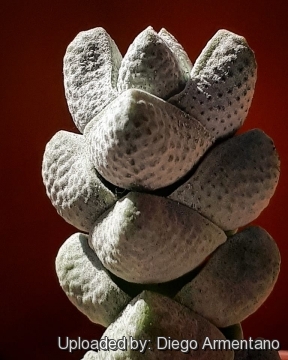 Crassula deceptrix (Crassula deceptor) Photo by: Diego Armentano
Crassula deceptrix (Crassula deceptor) Photo by: Diego Armentano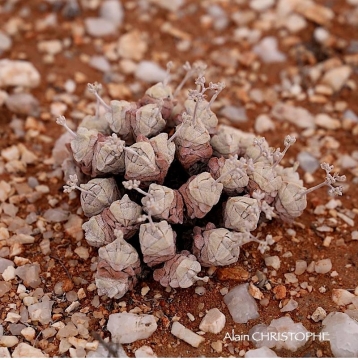 Crassula deceptor in habitat. (Crassula deceptor) Photo by: © Plantemania
Crassula deceptor in habitat. (Crassula deceptor) Photo by: © Plantemania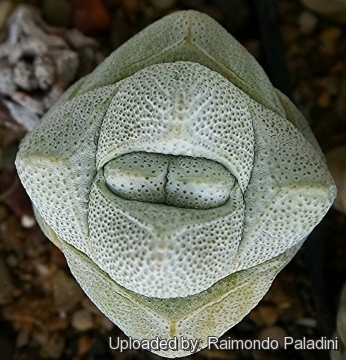 Crassula deceptrix (Crassula deceptor) Photo by: Raimondo Paladini
Crassula deceptrix (Crassula deceptor) Photo by: Raimondo Paladini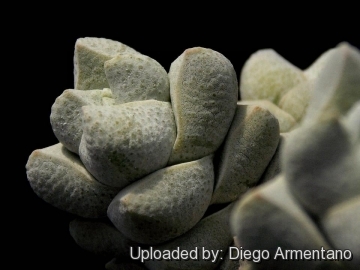 Crassula deceptrix (Crassula deceptor) Photo by: Diego Armentano
Crassula deceptrix (Crassula deceptor) Photo by: Diego Armentano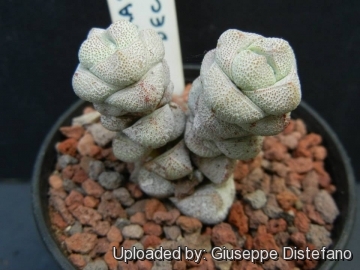 Crassula deceptrix (Crassula deceptor) Photo by: Giuseppe Distefano
Crassula deceptrix (Crassula deceptor) Photo by: Giuseppe DistefanoSend a photo of this plant.The gallery now contains thousands of pictures, however it is possible to do even more. We are, of course, seeking photos of species not yet shown in the gallery but not only that, we are also looking for better pictures than those already present.
Read More... Cultivation and Propagation: Of easy cultivation, they will require a free draining compost and good light to keep the plants compact and encourage leaf colour and flowering. Needs regular water in summer, but reduce watering during winter month , fairly drought tolerant elsewhere. The white pruinose stem coatings of the plants in our collection sometime is not so intense as those of the plants in their natural habitat but the difference in coating is thought due to the higher humidity and less intense sunlight of our climate. After growing for several years tend to become untidy, and should be cut very short or restarted from cuttings. Crassulas are sensitive to mealybugs.
Propagation: Leaf or stem cuttings.
















